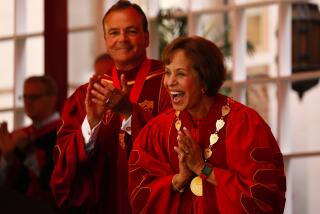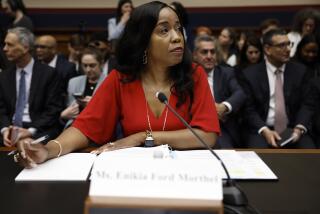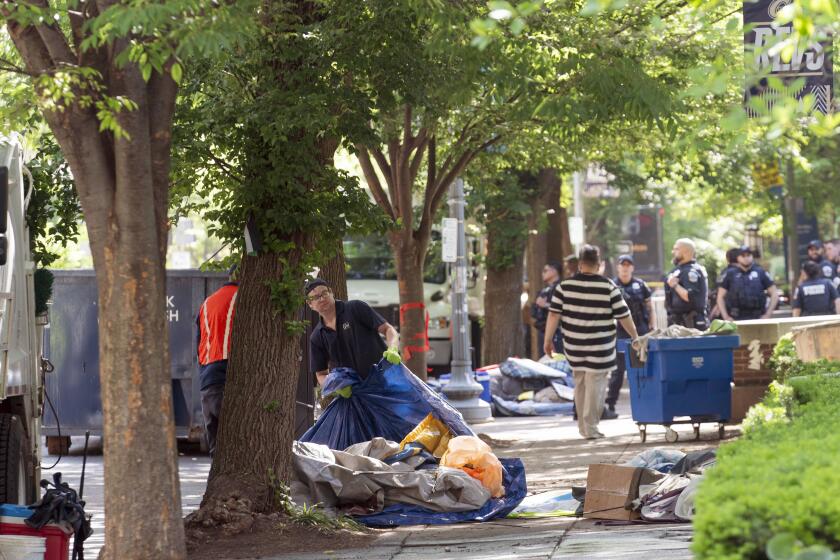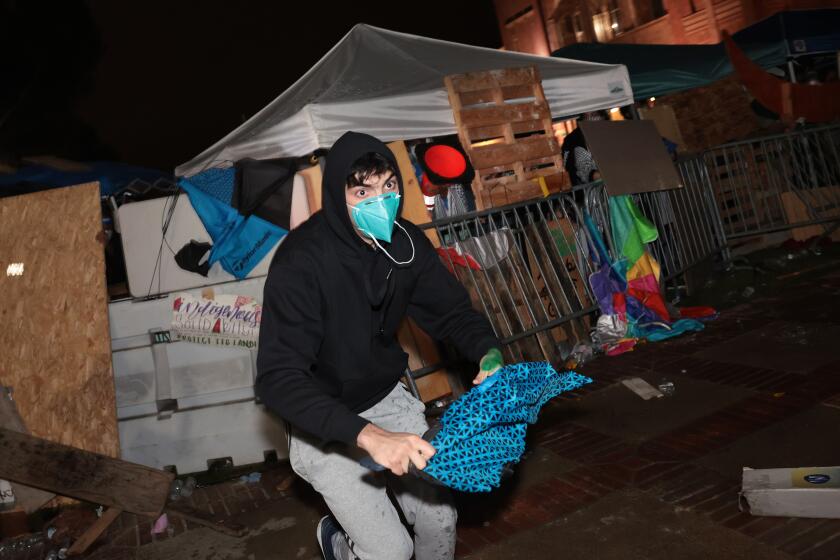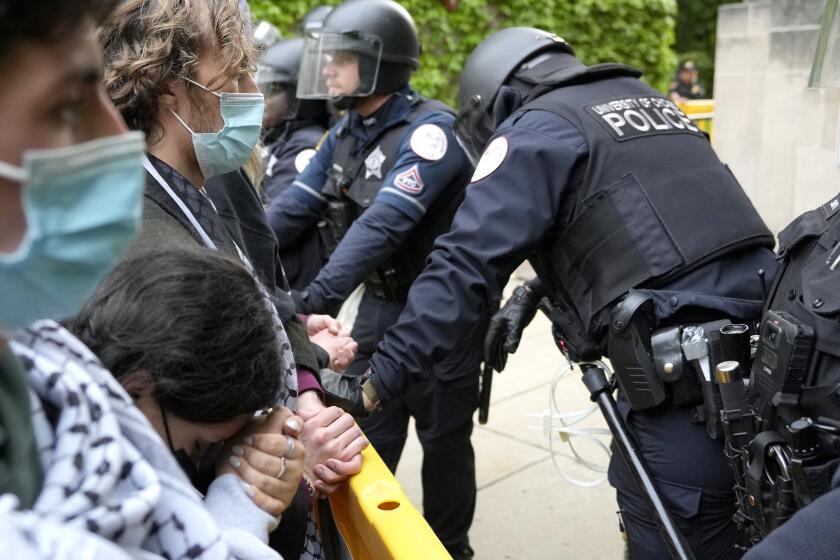Board Bans Smoking on School Property : Health: The tobacco-free policy takes effect Nov. 15. It covers teachers and all employees and will be enforced even at outdoor athletic events.
With surprisingly little fanfare, the Los Angeles Unified School District board voted 6-1 Monday to ban smoking by everyone on all its campuses and athletic fields, in all offices and vehicles, and at all district-sponsored events.
Student smoking has been prohibited and employee smoking restricted to certain rooms and areas for several years. But the ban--to take effect Nov. 15--will disallow tobacco use anywhere on district property, by everyone from teachers and administrators, to school bus drivers, office workers, parents and other school visitors.
In adopting its ban, Los Angeles is joining districts around the nation, including several in California. Most of those bans were enacted with relatively little uproar and implemented with few problems, administrators said.
“There have been a wave of these tobacco-free policies recently,” said Mike Fallon, spokesman for the California School Board Assn.
Although Los Angeles is the largest district in the nation to go smoke-free, Fallon said others undoubtedly will follow. “This is the coming thing. Many districts are moving in this direction.”
Smoking bans have been endorsed by national education organizations and employee groups. Many large companies have adopted similar bans, although some allow smoking in selected rooms or outdoors.
The ban was initially proposed by a group of teachers and other employees, and representatives of the American Heart, Lung and Cancer associations, who persuaded board President Jackie Goldberg to sponsor the motion.
Goldberg said she was persuaded by evidence that smoking is “the most devastating preventive cause of disease” in the country, that nonsmokers who inhale others’ smoke face increased health risks and that the tobacco industry may be targeting teen-agers as potential customers.
Formerly a heavy smoker, Goldberg said she is sympathetic to the needs of smokers. Quitting seven years ago was “the hardest thing I’ve ever done,” she said.
Teachers are expected to be hardest hit by the ban, but relatively little protest has been registered, either with the board or teachers union, officials said.
Most schools have established their own policies, restricting smokers to isolated areas, but that restriction has remained a divisive one among school employees, officials said. “I think there are probably some people this will make deliriously happy, and some who will be very uptight and upset because it leaves them with no option (other than) to leave school (to smoke) or quit,” said Helen Bernstein, president of United Teachers-Los Angeles.
The union has taken no official position on the measure, but did vote in May to prohibit smoking in its own headquarters building, Bernstein said.
Only board member Rita Walters voted against the measure. Declaring herself a “militant anti-smoker,” Walters nonetheless argued that the regulation will give students mixed messages because they will see teachers rushing off campus to smoke.
Her colleagues argued that the ban will encourage employees to stop smoking, discourage students from starting and send a message to youngsters that smoking is unhealthy.
“We’re not suggesting that casual smokers be taken out and shot,” quipped board member Warren Furutani, “but we’ve got to give a real clear message” that smoking is unacceptable.
Committees of smokers and non-smokers will be appointed to decide issues such as whether employees may smoke in their private autos in school parking lots, and to determine penalties for violators--such as what should be done to a parent caught lighting up in the stands at his or her son’s football game.
The motion includes provisions to sponsor stop-smoking clinics. “What we don’t want is (teachers) spending their lunch hour standing on the corner of Sunset and Grand with cigarettes hanging out of their mouths,” said board member Roberta Weintraub.
In other action, the board voted to install air conditioning units by next summer at 35 of the city’s hottest year-round schools. Another 26 year-round schools will receive room air conditioners by July, 1992, under the $34.5-million plan.
But the project is contingent on the district receiving $27.7 million in special state funds. The board agreed to spend an estimated $6.7 million in fees collected from developers to complete the project.
Teachers and students attending schools that began operating year-round this summer have complained about classroom temperatures that routinely approached 100 degrees. The 61 schools picked to get air conditioning over the next two years had recorded the highest temperatures among schools in the district.
As a cost-saving measure, the 61 schools will receive room and window air conditioning units rather than central air conditioning.
The board also took the first step toward increasing the $24,000 annual salaries for board members by setting an Oct. 8 public hearing on whether to seek a waiver from regulations limiting salaries to $2,000 a month.
Should the State Board of Education grant a waiver, the board will have another public hearing before the new salaries are set. Board members have long complained that they are not paid enough for what amounts to a full-time job.
Times staff writer Sam Enriquez contributed to this story.
More to Read
Start your day right
Sign up for Essential California for news, features and recommendations from the L.A. Times and beyond in your inbox six days a week.
You may occasionally receive promotional content from the Los Angeles Times.
